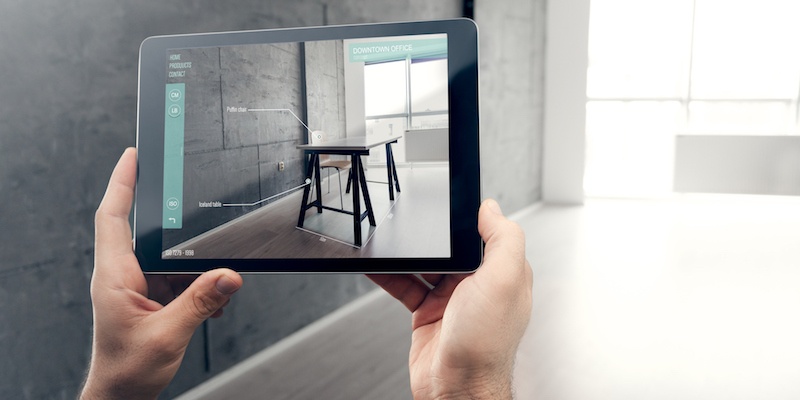The Future is Mcommerce: Why Stores Need a Retail Mobile App

While we may not have flying cars yet (way to get our hopes up, Back to the Future…), modern technology is still kind of incredible.
About a week ago, I used Amazon Prime Now to have a few things delivered to my office. Two hours after I placed the order, dog treats and puppy training pads were at the front desk. As I was walking to the lobby to pick them up, I opened the Venmo app to transfer money to someone. That night, I ordered dinner via Uber Eats.
The future is crazy, y’all.
But these conveniences are a double-edged sword for retailers. As consumers, ecommerce merchants can benefit just as much from B2C mobile technology as their customers. But as sellers, they must know how to leverage this technology to meet the skyrocketing expectations of shoppers.
For years a mobile-friendly site was a key differentiator for ecommerce brands. These days, it’s a given. If a brand wants to eclipse its competition, it has to offer a retail mobile app. Here’s why.
More Personalized Experiences

Personalization is powerful. And a brand who can provide consumers a shopping experience tailored to their individual interests is a brand with staying power.
In its Personalization Pulse Check, Accenture illustrated how personalization impacts customer decisions:
- 65% of consumers are more likely to shop at a retailer that remembers their past purchases
- 58% said they prefer to buy from a store that makes recommendations based on their purchase history
- Nearly ⅔ of claimed they shop more with retailers who offer relevant and personalized promotions
However, you can’t personalize experiences without data. And tracking a shopper’s interactions with your brand’s website can certainly provide useful information. But the volume of data you can gather from your website pales in comparison to what a mobile app can provide.
comScore found that individuals spend 87% of their time on mobile using apps and only 13% of that time browsing websites. And users spend nearly half their digital time in a retail mobile app. Greater engagement = more data. More data = better personalization. Better personalization = happier customers.
Higher Conversion Rate

A brand can do a whole lot to enhance its site for mobile shoppers. But at the end of the day, it’s still limited by browser capabilities.
One of the biggest drawbacks of mobile websites is how challenging it can be to optimize site speed. And according to DoubleClick by Google, over half of mobile site visitors will abandon the page if it takes more than three seconds to load. Shoppers are impatient. But an app doesn’t have to download individual elements like ads, images, and videos from a server the way a mobile site does. And because apps load faster, customers stick around.
A retail mobile app also gives you an additional way to win back cart abandoners: push notifications. Abandoned cart emails are a tried-and-true method. But not every consumer (myself included) has their settings configured to show new email alerts when their phone is locked. Push notifications, however, do display on the lock screen, making them an effective way to recapture the customer’s attention. Plus, you can use a customer’s GPS to deploy push notifications when they’re near your store — something you definitely can’t do with email.
The other major disadvantage of a mobile site is that when a shopper clears their cache, they’re automatically logged out of your site. This means re-engaging them just became way more difficult. But unless a user manually logs out of your app, you’ve always got an open line of communication to them (and their data).
Ability to Apply Augmented Reality (AR)

Fun Fact: When Pokémon Go launched in July 2016, Google searches for “augmented reality” literally quadrupled. Augmented reality (AR) wasn’t a wholly new idea at the time — Google Glass had been around for about two years by then. But Google Glass was crazy expensive and not available to everyone. So the fact that anyone with a smartphone could now experience AR was pretty mind-blowing.
Some larger retailers have been using AR for a few years. American Apparel actually launched an app back in 2012. It allowed shoppers to scan product displays and see customer reviews as well as additional size and color options on their phone. But the technology is definitely still evolving.
Retailers who can offer AR to shoppers are on the forefront of one of the most effective ways to build customer loyalty. A survey by Retail Perceptions found that 61% of shoppers prefer to buy from retailers that offer AR. And 71% said they’d shop at a store more often if it offered AR.



If the projections are accurate, a retail mobile app will soon be a necessity for merchants. But this isn’t a “If you build it, they will come,” situation. Incentivize shoppers to download your app with exclusive deals and discounts. And make sure that once they get it, they’re encouraged to continue using it. This means creating a well-designed and easy-to-use interface. No sense in developing an app no one’s going to use, right?



